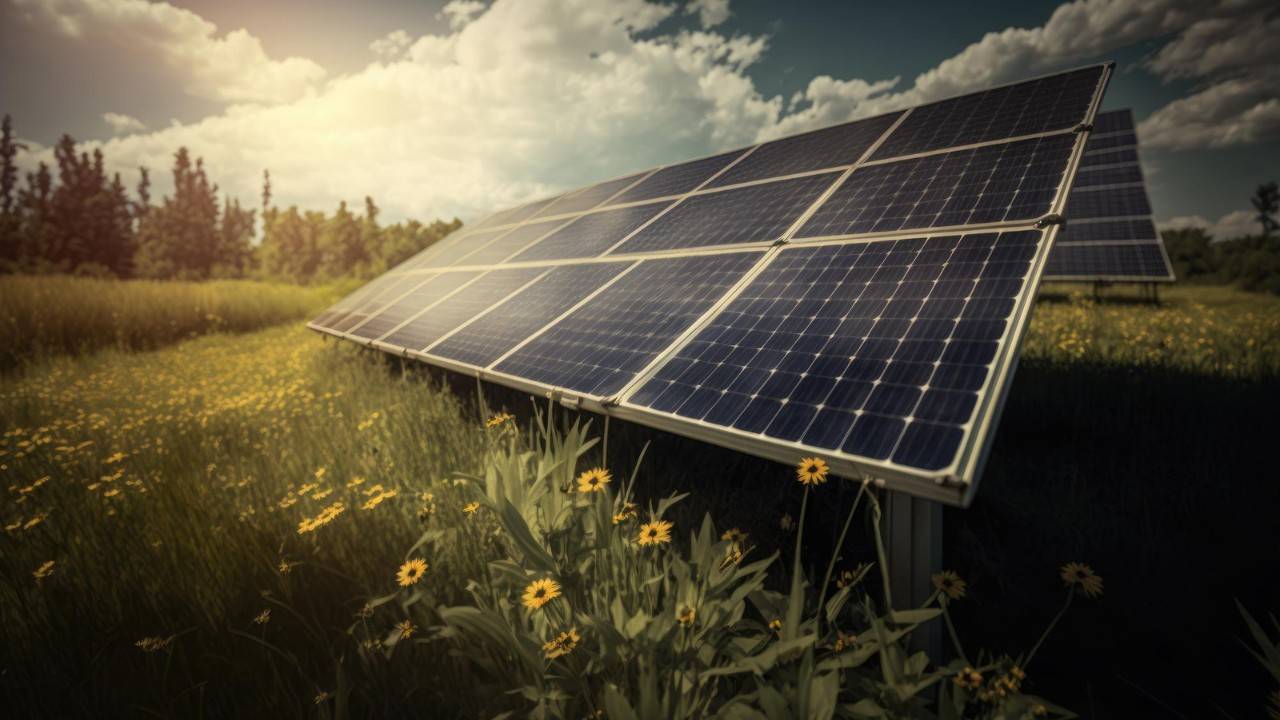In a groundbreaking move towards harmonizing renewable energy with ecological conservation, a recent study has revealed that solar farms, when integrated with native wildflowers and grasses, can transform into vibrant habitats for a plethora of species including insects, birds, and bees.
This revelation comes from meticulous research conducted by scientists at the U.S. Department of Energy’s National Renewable Energy Laboratory and Argonne National Laboratory.The study, prominently featured in a press release from Argonne National Laboratory, highlights a startling discovery: the number of insects in these rejuvenated habitats tripled within a span of less than five years. The research underscores the profound implications of global insect population declines on biodiversity and food security.
It also accentuates the potential of large-scale solar energy developments in agricultural landscapes to double as biodiversity conservation areas, a concept called ‘solar-pollinator habitat.’
Over a five-year period, the researchers scrutinized two solar sites in southern Minnesota, previously designated as agricultural land. Their focus was to observe the establishment of newly planted native vegetation and monitor the response of insect communities to these restored habitats. Leroy J. Walston, an environmental scientist and landscape ecologist with Argonne National Laboratory and the lead author of the study, noted the swift and favorable response of insect communities to these habitat restorations.
The findings, published in the journal Environmental Research Letters, indicate that well-positioned, habitat-friendly solar installations can protect insect populations and enhance pollination services in adjacent agricultural fields.
The study comes at a critical time when insect biodiversity is witnessing a global decline, attributed to factors such as pesticides, habitat loss, and climate change. The development of renewable energy facilities on previously utilized lands, coupled with efforts to restore insect habitats, is emerging as a strategic approach to mitigate this crisis.
Agrivoltaics, the fusion of vegetation and agricultural management with solar energy production, stands at the forefront of this initiative. The strategy emphasizes creating habitats for pollinators and other wildlife, thereby delivering essential ecosystem services. Pollinators, pivotal for about 75% of global crop production, play a crucial role in ecosystem functions such as nutrient cycling, plant pollination, seed dispersal, and maintaining soil quality.
Despite the scarcity of field data on the ecological benefits of integrating habitat restoration with solar energy production, this study provides compelling evidence. Commencing in early 2018, the solar sites were adorned with flowering plants and native grasses. Subsequent surveys over four years underscored significant increases in the diversity and abundance of both insects and plants, culminating in a habitat bustling with life.
Heidi Hartmann, co-author of the study and manager of Argonne’s Land Resources and Energy Policy program, expressed satisfaction in witnessing the flourishing habitat and its positive impact on pollinators. The team’s dedication to data collection, involving repetitive visits to each site, painted a vivid picture of the evolving ecosystem.
The researchers also observed that pollinators from these solar sites ventured into neighboring fields, contributing to the pollination of crops like soybeans. This finding hints at the broader ecological impact of these solar farms, transcending their immediate boundaries.
While acknowledging that solar-pollinator habitats may not entirely neutralize the ecological impacts of poorly sited solar developments, the study posits that their greatest potential lies in areas previously compromised ecologically, such as marginal farmland or former industrial sites. In these settings, solar-pollinator habitats could offer net biodiversity benefits.
As the study concludes, Argonne National Laboratory calls for more research to assess the viability of habitat-friendly solar installations and ecological objectives across various regions. This pioneering research not only highlights the potential of solar farms as catalysts for biodiversity conservation but also paves the way for a future where renewable energy and environmental stewardship go hand in hand.
More inspiring green news similar to this:

